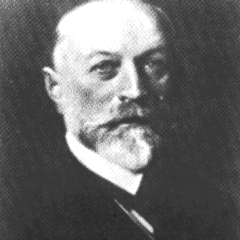|
Mutlangen
Mutlangen is a town in the German state of Baden-Württemberg in the Ostalbkreis district and belongs to the Stuttgart Metropolitan Region. As of 31 December 2015, it has 6,588 inhabitants. Geography Mutlangen is located between the Welzheim Forest and the Swabian Keuper-Lias Plains on an elevation above the Rems valley. The neighboring communes of Mutlangen are Durlangen in the north, the city of Schwäbisch Gmünd in the east and south as well as Alfdorf in the west. Mutlangen consists of the small town Mutlangen and the hamlet Pfersbach, which belongs to Mutlangen since 1 April 1973. History At around 500 AD and later the first verifiable settlement existed (marking of Muotho). However, the site only became more popular at around 1100 to 1200 AD. The manorial systems alternated in a fast pace: Hohenstaufen, Weinsberg and Rechberg. After some time monasteries and families from the nearby Gmünd area were its landlords. The name Mutlangen was first mentioned in 1293 in the scri ... [...More Info...] [...Related Items...] OR: [Wikipedia] [Google] [Baidu] |
Ines Pohl
Ines Pohl (born 12 April 1967, in Mutlangen, Baden-Württemberg) is a German journalist. Early life and education Pohl grew up in rural Swabia ( East Württemberg) as the daughter of a kindergarten teacher (mother) and a skilled labour worker (father). After graduating high school (German ''Abitur'') in Schwäbisch Gmünd, she studied German studies and Scandinavian studies at the University of Göttingen. In the early and mid-1980s, as a school girl and a young student, Pohl was actively involved in the German peace movement, specifically in the protest against the stationing of MGM-31 Pershing missiles at a United States Armed Forces Missile Storage Area at ''Mutlanger Heide'' ("Mutlangen heathland") near her hometown (as part of the NATO Double-Track Decision). Career and private life In the 1990s, Pohl worked as a freelance journalist at a local radio station as well as for several regional newspapers; she did her traineeship at ''Hessische/Niedersächsische Allgemeine' ... [...More Info...] [...Related Items...] OR: [Wikipedia] [Google] [Baidu] |
Pershing II
The Pershing II Weapon System was a solid-fuel rocket, solid-fueled multistage rocket, two-stage medium-range ballistic missile designed and built by Martin Marietta to replace the Pershing 1a Field Artillery Missile System as the United States Army's primary nuclear-capable theater-level weapon. The U.S. Army replaced the Pershing 1a with the Pershing II Weapon System in 1983, while the German Air Force retained Pershing 1a until all Pershings were eliminated in 1991. The U.S. Army United States Army Aviation and Missile Command, Missile Command (MICOM) managed the development and improvements, while the Field Artillery Branch (United States), Field Artillery Branch deployed the systems and developed tactical doctrine. Development Development began in 1973 for an updated Pershing. The Pershing 1a had a 400 kt warhead, which was greatly over-powered for the Quick Reaction Alert (QRA) tactical role the weapon system filled. Reducing warhead yield, however, required a signific ... [...More Info...] [...Related Items...] OR: [Wikipedia] [Google] [Baidu] |
Welzheim Forest
The Welzheim Forest (german: Welzheimer Wald) is a wooded, hill ridge, up to , in the counties of Rems-Murr, Ostalb and Schwäbisch Hall in Baden-Württemberg (Germany). Geography Location The Welzheim Forest lies just under 38 kilometres east-northeast of Stuttgart and about 45 kilometres southeast of Heilbronn between the Murrhardt Forest and the Mainhardt Forest in the north, the Frickenhofer Höhe in the east-northeast, the Albuch in the southeast, the Schurwald in the southwest and the Berglen and Buocher Höhe in the west. At the same time, the Welzheim Forest is one of five forest regions in the Swabian-Franconian Forest Nature Park. As a natural region it is, however, not counted with the Swabian-Franconian Forest but, together with the Schurwald and the Berglen, forms its own natural region. It takes its name from the town of Welzheim in the centre of the region. The Welzheim Forest is located around Welzheim, Kaisersbach and Alfdorf roughly betwe ... [...More Info...] [...Related Items...] OR: [Wikipedia] [Google] [Baidu] |
56th Field Artillery Command
The 56th Artillery Command is a two-star command of the United States Army that serves as the Force Field Artillery Headquarters for U.S. Army Europe and Africa, with a mission to synchronize, integrate, and control fires and effects in support of the theater land component. The unit was originally formed on September 14, 1942 as the 56th Coast Artillery Brigade and has been reorganized and redesignated several times until its inactivation on June 30, 1991 following the reunification of Germany and the end of the Cold War. United States Army Europe and Africa conducted the reactivation ceremony for the 56th Artillery Command on November 8, 2021 at Lucius D. Clay Kaserne, Wiesbaden, Germany.John Gordon IV, John Matsumura, RAND corporatio(2021) Army Theater Fires Command: Integration and Control of Very Long-Range Army Fires RR-A809-1 The 56th Artillery Command's headquarters in located in Mainz-Kastel and is commanded by Major General Stephen J. Maranian. History 56th Coast ... [...More Info...] [...Related Items...] OR: [Wikipedia] [Google] [Baidu] |
Ostalbkreis
The Ostalbkreis is a ''Landkreis'' (district) in the east of Baden-Württemberg, Germany, on the border to Bavaria. Neighboring districts are (from the north clockwise) Schwäbisch Hall, Ansbach, Donau-Ries, Heidenheim, Göppingen and Rems-Murr. History The district was created in 1973, when the District of Aalen merged with most of the former District of Schwäbisch Gmünd. Geography The district is located in the eastern part of the Swabian Alb (''Schwäbische Alb''), hence its name which translates to ''Eastern Alb District''. Main rivers in the district are the Rems, the Jagst and the Kocher, all affluents of the Neckar. Politics Federally, the district is part of two electoral ridings: 270 (Backnang – Schwäbisch Gmünd) and 271 (Aalen – Heidenheim). For the 2009 Election, the numeral designation was changed to 269 and 270 respectively. Both ridings are held by the CDU: Norbert Barthle (Backnang – Schwäbisch Gmünd) and Roderich Kiesewetter (Aalen - Heidenheim). ... [...More Info...] [...Related Items...] OR: [Wikipedia] [Google] [Baidu] |
Schwäbisch Gmünd Station
Schwäbisch Gmünd station was opened in 1861 and is located northwest of the city centre of Schwäbisch Gmünd in the German state of Baden-Württemberg. It is on the Rems Railway (german: Remsbahn) and is a stop for InterCity trains. History Three options were discussed in 1858 for the route of the Rems Railway through the city and the location of the station: *south of the city *north of the city, but south of the Rems *north of the Rems The first options would have meant passing through parks or the built-up area and the future expansion of the city would have been affected. It was decided that the line would run north of the Rems, which meant that the station would be away from the city centre. It also required the relocation of the Rems river, which would protect the city against flooding. Responsibility for the design of the station building was assigned in Württemberg in the 1850s and 1860s to the chief engineer responsible for the construction of the rail track, wh ... [...More Info...] [...Related Items...] OR: [Wikipedia] [Google] [Baidu] |
Aalen
Aalen () is a former Free Imperial City located in the eastern part of the German state of Baden-Württemberg, about east of Stuttgart and north of Ulm. It is the seat of the Ostalbkreis district and is its largest town. It is also the largest town in the Ostwürttemberg region. Since 1956, Aalen has had the status of Große Kreisstadt (major district town). It is noted for its many half-timbered houses constructed from the 16th century through the 18th century. With an area of 146.63 km2, Aalen is ranked 7th in Baden-Württemberg and 2nd within the Stuttgart (region), Government Region of Stuttgart, after Stuttgart. With a population of about 66,000, Aalen is the 15th most-populated settlement in Baden-Württemberg. Geography Situation Aalen is situated on the upper reaches of the river Kocher, at the foot of the Swabian Jura which lies to the south and south-east, and close to the hilly landscapes of the Ellwangen Hills to the north and the ''Welland'' to the no ... [...More Info...] [...Related Items...] OR: [Wikipedia] [Google] [Baidu] |
Rottenburg Am Neckar
Rottenburg am Neckar (; until 10 July 1964 only ''Rottenburg''; Swabian: ''Raodaburg'') is a medium-sized town in the administrative district (''Landkreis'') of Tübingen in Baden-Württemberg, Germany. It lies about 50 kilometres (31 miles) southwest of the provincial capital Stuttgart and about 12 km (7 mi) southwest of the district town Tübingen. Rottenburg is the second-largest town of the district after Tübingen and makes up a secondary centre for the surrounding community. Since 1 May 1972, Rottenburg am Neckar has been a district town (''Große Kreisstadt''). Rottenburg agreed to an administrative collective with the municipalities of Hirrlingen, Neustetten and Starzach. Rottenburg is the seat of a Roman Catholic bishop, being the official centre of the diocese of Rottenburg-Stuttgart. Moreover, it has a college of church music and a university of applied sciences (German ''Fachhochschule''), specialising in forestry. Geography Rottenburg is divided int ... [...More Info...] [...Related Items...] OR: [Wikipedia] [Google] [Baidu] |
Gaildorf
Gaildorf is a town in the district of Schwäbisch Hall, in Baden-Württemberg, Germany. It is located on the river Kocher, 13 km south of Schwäbisch Hall. Gaildorf is the approximate center of the Limpurger Land district, formerly a county of the Holy Roman Empire ruled by the counts Schenk von Limpurg until their extinction in 1713, thereafter inherited by a number of female heirs, and mediatized to the Kingdom of Württemberg in 1806. Notable people * (1806–1883), member of Landtag * (1700-1783), organ-maker * (1807–1857), Württembergian city councilman * (1817–1907), doctor and poet (son of Justinus Kerner) * (1824–1895), merchant and member of landtag * (1835–1914), prime minister of Württemberg * (1839–1892), Schultheiß and politician * (1847–1928), pharmacist and fossil-collector in Crailsheim * (born 1926), agriculturalist * (1936–2009), writer * (born 1959), composer * (born 1969), politician (CDU) *Hermann Frasch Herman Frasch r Hermann Fras ... [...More Info...] [...Related Items...] OR: [Wikipedia] [Google] [Baidu] |
Vaskút
Vaskút (German: ''Waschkut'' or ''Eisenbrunn'', Croatian: ''Baškut'' or ''Vaškut'') is a large village in Bács-Kiskun county, in the Southern Great Plain region of southern Hungary. Geography It covers an area of 71.49 km². It has a population of 3327 people (2015). Demographics * Magyars * Germans * Croats * Bunjevci Before 1945, there was high share of Germans (Danube Swabians) in Vaskút's population, that spoke their own dialect of German language. After the war, numerous Magyars ( Szeklers from Bukovina and Csángós from Moldavia) were settled here. Notable persons * Stefan Schoblocher (1937), writer * Fabijan Peštalić (1845–1909), Franciscan, important personality of national movement of the Danubian Croats * Grgur Peštalić (1755–1809), Franciscan, Croatian writer * Bede Lackner Bede Lackner (December 19, 1927 – November 10, 2020) was a Hungarian-American, Catholic priest and monk of the Cistercian Order. He was a theologian and historian. ... [...More Info...] [...Related Items...] OR: [Wikipedia] [Google] [Baidu] |
Bouxières-aux-Dames
Bouxières-aux-Dames () is a commune in the Meurthe-et-Moselle department in northeastern France. Geography The village is located on the slope of a hill, directed south-north. It overlooks the confluent of Moselle and of Meurthe within its north-north-west. It is located at the north-north-east of Nancy, along the motorway A31. The village is divided into five parts: * the top of the village around the remainders of the abbey and the lawn, on the summit part of the hill. * the heart of the village around the church and the town hall, * the recent district of Neveaux on the northern side of the hill, * the district of the ''Noisetiers'' in the small valley of the brook of the Moret pond, * the areas along Meurthe. History The name of Bouxières comes from the Latin word '' buxus '' which means boxwood. The history of Bouxières-aux-Dames is closely related to its abbey of chanoinesses or ''ladies'' ("dames" in French), founded by Saint Gauzelin. Issued from a noble Franki ... [...More Info...] [...Related Items...] OR: [Wikipedia] [Google] [Baidu] |


